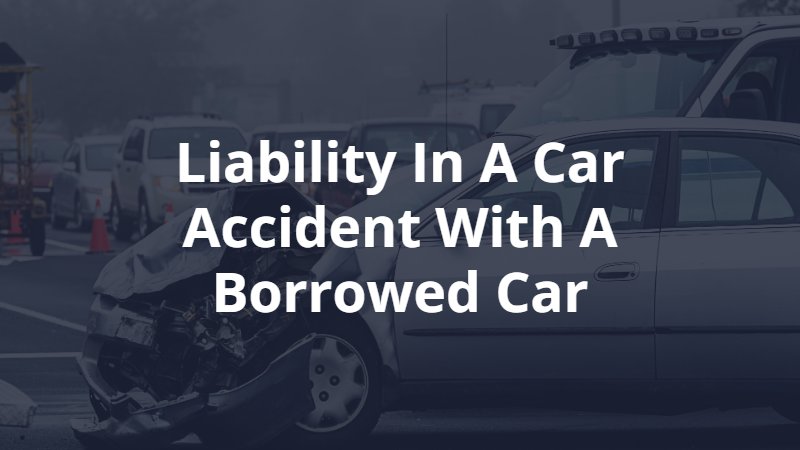It can be difficult enough to determine who is liable, or legally and financially responsible, for a car accident that occurs in your own vehicle; if you get into a crash in a borrowed car, understanding who pays is even more complicated. Liability for a crash involving a borrowed car can depend on the circumstances of the accident.

Vehicle Owners Are Liable Under California Law
Under California Vehicle Code Section 17150, every owner of a motor vehicle is liable for death, injury or property damage resulting from negligent or reckless operation of the motor vehicle. This law holds a vehicle’s owner responsible for collisions caused by the driver of the vehicle – even if the driver is not the owner. Liability is determined by identifying the actual owner of the vehicle.
California is one of eight states that allow reduced coverage limits in cases involving a permissive driver (a driver with permission to drive a borrowed car). Under this rule, the insurance coverage available to pay for a car accident caused by a permissive driver may be reduced to the state’s minimum required insurance level, even if the actual coverage available exceeds these amounts. California law limits permissive liability to $15,000 per person and $30,000 per accident in bodily injury insurance, plus $5,000 for property damage. It is important to carefully review your insurance policy to determine whether there is a “step down” in coverage for accidents caused by permissive drivers using your vehicle.
If Someone Else Borrowed Your Car
If you lend your vehicle to a friend or family member who is then responsible for causing a car accident, you will most likely be held liable for damages as the owner of the vehicle. An automobile insurance policy is attached to the motor vehicle, not the driver. This means that any accident involving your car is most likely covered by your car insurance policy, whether or not you were driving, as long as the driver had your permission to take the car.
Note that your car insurance rates may increase after paying for a car accident that involves your vehicle, even if you were not in the vehicle or the person driving the car at the time of the crash. Your car insurance company was still held responsible for paying for the accident, so it may raise your premiums as a result. This is why it is important to only let someone you know and trust borrow your car.
Under California’s “at-fault” car insurance rule, if the other driver involved in the car accident is found to be at fault for the crash, his or her car insurance will cover the damages rather than your own policy. This is true in any car accident case, regardless of whether or not the vehicle being driven belongs to someone else. Your insurance would only cover the other party’s damages if the person driving your car was at fault.
If You Borrowed Someone Else’s Car
If you get into a car accident while driving someone else’s car with their permission, the owner of the vehicle will most likely have to pay for the damage caused. This can include any physical injuries and property damage suffered by the other party/ies involved in the crash. If you are not at fault for the accident, however, the other party will be responsible for paying. Speak to an injury attorney in Los Angeles for more information.
If someone else is at fault for your crash but he or she does not have insurance, the owner of the borrowed car may have to pay for repairs. Uninsured or underinsured motorist insurance will cover this type of accident. If the owner of the vehicle does not have this type of insurance, he or she may have to pay for repairs out of pocket.
For more information about determining liability for a car accident involving a borrowed car, request a free consultation with a Los Angeles accident attorney at Panish | Shea | Ravipudi LLP.